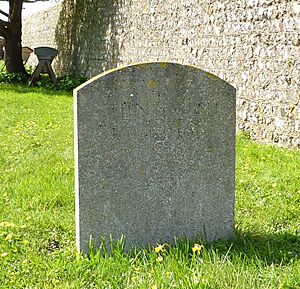Quentin Bell facts for kids
Quentin Bell (born August 19, 1910 – died December 16, 1996) was an English art expert and writer. He was known for his books and for teaching art history at universities. Quentin came from a very famous family of artists and writers, including his mother, Vanessa Bell, and his aunt, Virginia Woolf.
Contents
Quentin Bell's Early Life
Quentin Bell was born in London. His parents were Clive Bell, a writer who wrote about art, and Vanessa Bell, a painter and designer. His aunt was the famous writer Virginia Woolf. Quentin went to Leighton Park School, a Quaker school, and later studied at Cambridge University.
His Work and Career
Quentin Bell spent much of his life teaching and writing about art.
Teaching Art History
After finishing his education, Quentin became a teacher of art history.
- From 1952 to 1959, he taught at Durham University.
- From 1959 to 1967, he was the first Professor of Fine Art at the University of Leeds.
- He also taught at Oxford University and the University of Hull.
- From 1967 to 1975, he was a Professor of Art History and Theory at the University of Sussex.
As an Artist and Writer
Quentin Bell was also an artist himself, especially known for his work with ceramics (like pottery). But he spent most of his career teaching and writing books.
Writing About His Aunt
One of his most famous books was a biography about his aunt, the writer Virginia Woolf. This book, called Virginia Woolf: A Biography, won several important awards. These included the James Tait Black Memorial Prize and the Duff Cooper Prize.
Books on the Bloomsbury Group
He also wrote many books about the Bloomsbury Group. This was a group of artists, writers, and thinkers who lived and worked near London in the early 1900s. Quentin also wrote about Charleston Farmhouse, which was the home of his mother and other artists from the Bloomsbury Group.
His Family Life
Quentin Bell was married to Anne Olivier Bell. They had three children, and all of them followed in their family's artistic footsteps:
- Julian Bell became an artist.
- Cressida Bell became a textile designer.
- Virginia Nicholson became a writer.
Quentin also had an older brother named Julian Bell, who passed away when he was young. His half-sister was the writer and artist Angelica Garnett.
His Passing
Quentin Bell passed away in Sussex in 1996. He is buried in the churchyard of St. Peter's Church in West Firle, East Sussex.


